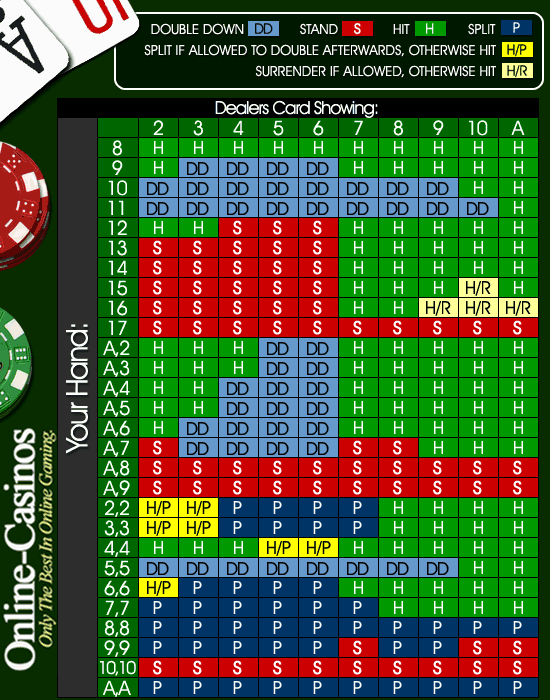Anthony Donskov
Anthony Donskov is the founder of DSC where he serves as the Director of Sport Performance. Donskov holds a Masters Degree in Exercise Science & is the author of Physical Preparation for Ice Hockey.
Strength Coaches: Know When to Hold Em’, Know When to Fold Em’
- Font size: Larger Smaller
- Hits: 4774
- Subscribe to this entry
- Bookmark
There is a reason the Vegas strip is plush with multi-million dollar Casinos. The house wins! More often than not the few lucky individuals that “hit it big” are overshadowed by individuals that have lost a great deal! To steal a metaphor from the great Coach Dan John in his book “Easy Strength”: strength and conditioning is a lot like Blackjack. Knowing when to “hit” and when to stay/stand is both an art and a science. Lets take a deeper look at the similarities.

Blackjack 101:
Perfect hand in Blackjack: 21
Strength Implications: Highest CNS excitation on day of game/competition
Good Hand in Blackjack: 12-19
Strength Implications: High CNS excitability
Bad Hand in Blackjack: Bust
Strength Implications: Overtraining, overreaching, injury
With the advent of Crossfit, P90X, Insanity and all the other high-intensity trends, we are paying the casinos hand over fist. The “more is always better” mentality is dangerous! It’s only a matter of time before all of our money (adaptation) is used up and we’re broke (injured). As a former athlete, being too aggressive in the weight room has cost me at least one shoulder surgery and countless other soft tissue strains. I have learned over the years as a Coach that it’s much wiser to “stand” than to “hit” in order to beat the house. Training is all about investing, or building your athletes “bank account” not draining it and putting the body into bankruptcy. Look at what some of the best Blackjack players (Strength Coaches) in the business say about “the perfect hand.”
Coach Boyle: “Minimal effective dose.”
Translation: Stand with a good hand!
Coach Charlie Francis: “Smaller CNS demands over a longer period of time result in more acceptance and greater improvement, while the rush to get more done leads to uncertainty down the road.”
Translation: Stand with a good hand. Don’t hit!
Coach John: “Coax the gains, not force them.”
Translation: Stand with a good hand. Don’t hit!
Coach Pavel: “Up and coming athletes should not gamble at all. Dan (John) and I insist that they say “stand” early on and pass on the “hit” of the high-intensity CNS priming-especially with their event.”
Translation: Stand with a good hand. Don’t hit!
Coach Verkhoshansky: “The most frequent coaching error is when he strives to obtain an increase in the athlete’s physical fitness level as soon as possible; increasing the training volume loads. The systemic organization is the ordering of training loads, as the elements of the system of training stimuli that are artificially created for a specific purpose; their functioning and relationships during the training process should be based on the lows of human adaptation to intensive muscular activity.”
Translation: Stand with a good hand. Don’t hit too soon!

Blackjack Cheat Card
Look at the Cheat Card above. The red is the most important. How many are willing to “stand” on a 12-17 if the dealer has a six showing? If the answer seems obvious, it should be, but “so obvious” may be the most difficult concept in advancing one’s work. At the moment, the strength and conditioning field is paying the dealer hand over fist! We are “hitting” more and “standing” less, putting our athletes/clients at risk. Below are several ways to build a better hand and to beat the dealer.
- Always leave 1-2 reps in the bank.
- Fluctuate the training loads every 3 weeks.
- Keep high CNS activity to a minimum (ex. 15 foot contacts for plyometrics).
- Limit high volume, high CNS activity.
- Reduce volume during certain points in the macrocycle/program (in-season).
- Monitor time under tension.
- Learn to “stand”.
- Tissue quality/foam roll.
- Adequate recovery/sleep.
- Remember training is not an end to a means; it’s a means to an end!
There’s a reason for the fancy Casinos, high-rise buildings and glamour of Vegas. Greed can be a dangerous companion. “Hit” is a common word! Let’s not continue to pay the house in strength and conditioning. The goal is adaptation and “money in the bank”. As Coaches, we need to learn to be confident with the word “stand.” We need to know when to hold em’, and when to fold em’.
Anthony Donskov, MS, CSCS, PES, is a former collegiate and professional hockey player, founder of Donskov Strength and Conditioning Inc., (www.donskovsc.com) and Head Instructor/Director of Off-Ice Strength and Conditioning for Donskov Hockey Development (www.donskovhockey.com). He can be reached at info@donskovsc.com .
Facebook: http://www.facebook.com/pages/Donskov-Strength-and-Conditioning-Inc/111694352189187
Twitter: http://twitter.com/Donskovsc
